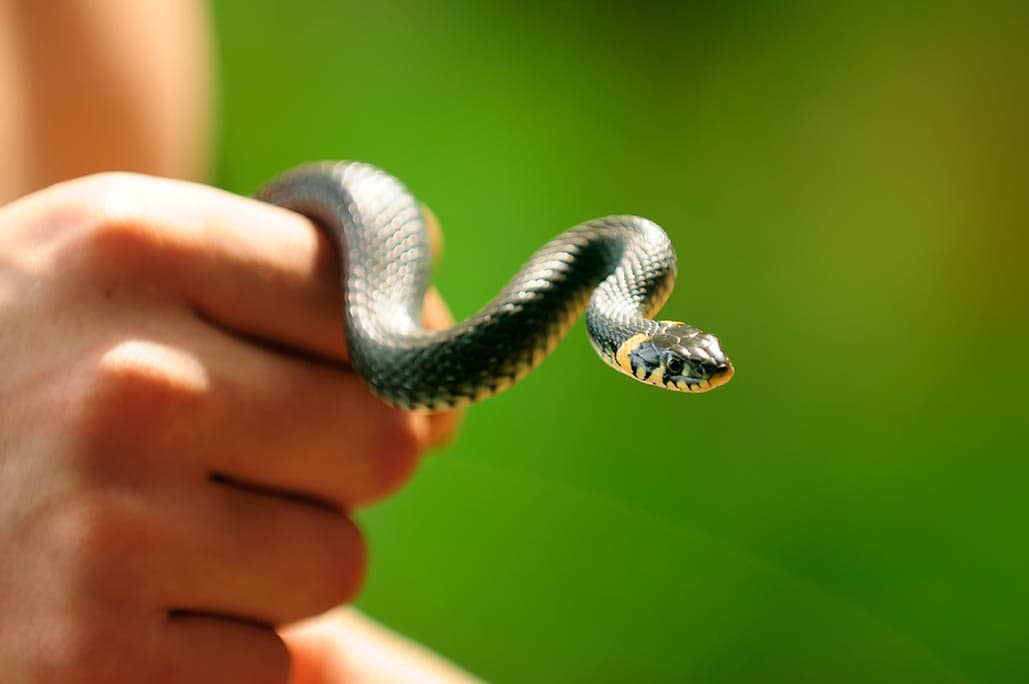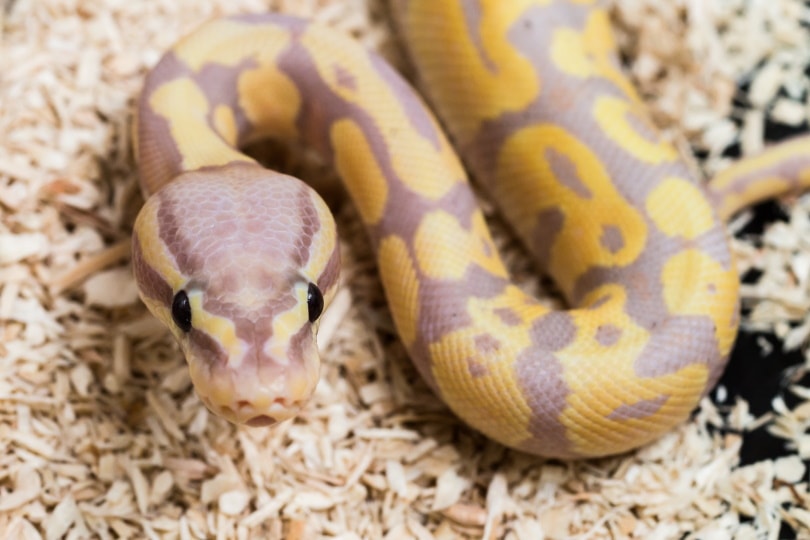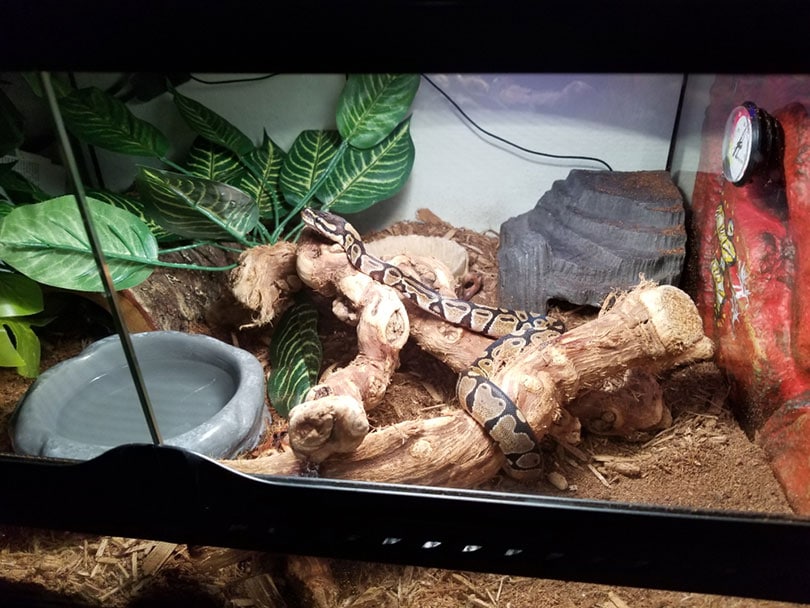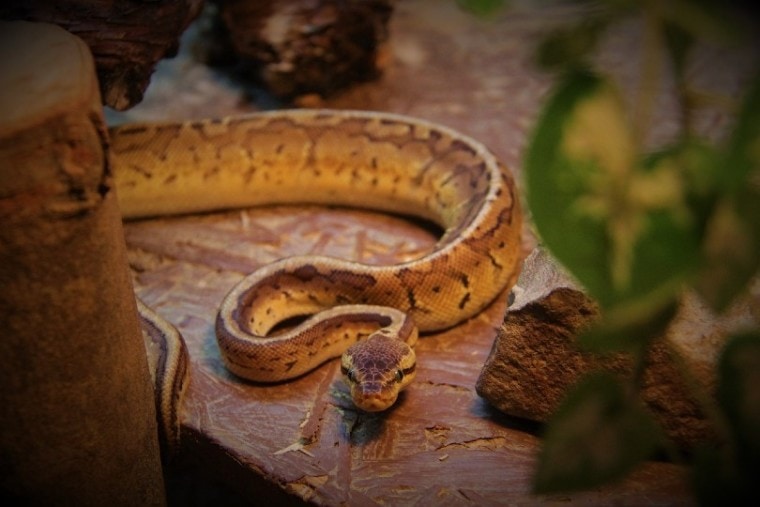
All snakes, including ball pythons, are cold blooded. What this means is that these creatures depend on their environment to stay warm. If their enclosure does not provide the proper environment, the snake will get sick and die. The most important factors about the environment are that it has to have specific temperature and humidity levels.
Luckily, ball pythons are pretty easy to take care of, once you master perfecting their enclosure conditions. Even though ball pythons need specific temperature and humidity levels, creating the proper environment for this snake is not difficult with the right tools and knowledge.
In this article, we provide you a complete guide to ball python temperature and humidity. After reading this article, you will be able to perfect your snake’s tank conditions so that it remains healthy and warm. Let’s get started!
What Is the Right Temperature for a Ball Python?
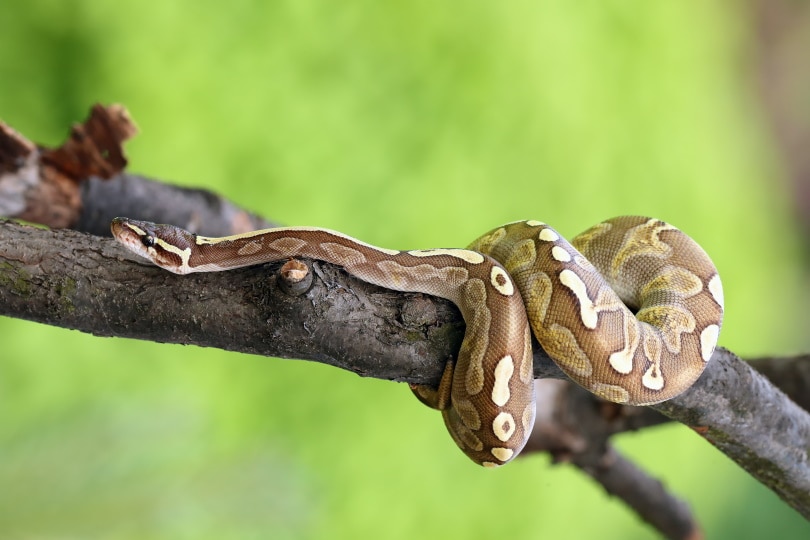
To begin, ball pythons need their enclosures to have a proper temperature so that they can regulate their body temperature. Because of this fact, the enclosure needs to have a temperature gradient. A temperature gradient simply means that the enclosure has different areas of different temperatures.
Temperature Gradient
| Gradient Spot | Min | Max |
| Basking | 88°F | 95°F |
| Basking Hide | 88°F | 90°F |
| Ambient | 78°F | 82°F |
| Cool | 75°F | 80°F |
| Cool Hide | 78°F | 80°F |
There are three main parts in a heat gradient: the basking spot, ambient spot, and cool spot. By providing three different types of temperatures in the tank, the snake can warm up or cool down as it needs.
Beginning with the basking spot, this spot provides a warm area for the snake to bask in. This area should be between 88 and 92°F. The basking spot is the only side of the tank that should be heated. It’s important that the basking spot does not exceed 95°F.
The ambient spot is in the middle of the tank. It will be located between the hot side and the cool side, meaning that this temperature should be around 82°F. Make sure that the ambient spot is cooler than the basking area, but it should not go below 75°F.
Finally, on the other side of the tank, opposite of the basking spot, is the cool spot. This is where your snake will cool off. This side of the tank should be between 76 and 80°F. Make sure that the tank does not drop below 75°F in all portions of the tank and during all hours of the day or night.
Hiding Temperatures
Ball pythons are not known to bask in an open area very often. Because of this fact, it’s important to have two hiding locations for your snake, one on the cool side and one on the hot side. The hot hide temperature should be around 90°F, whereas the cool side hide should be between 78° and 80°F.
How Do I Control the Temperature in My Snake’s Enclosure?
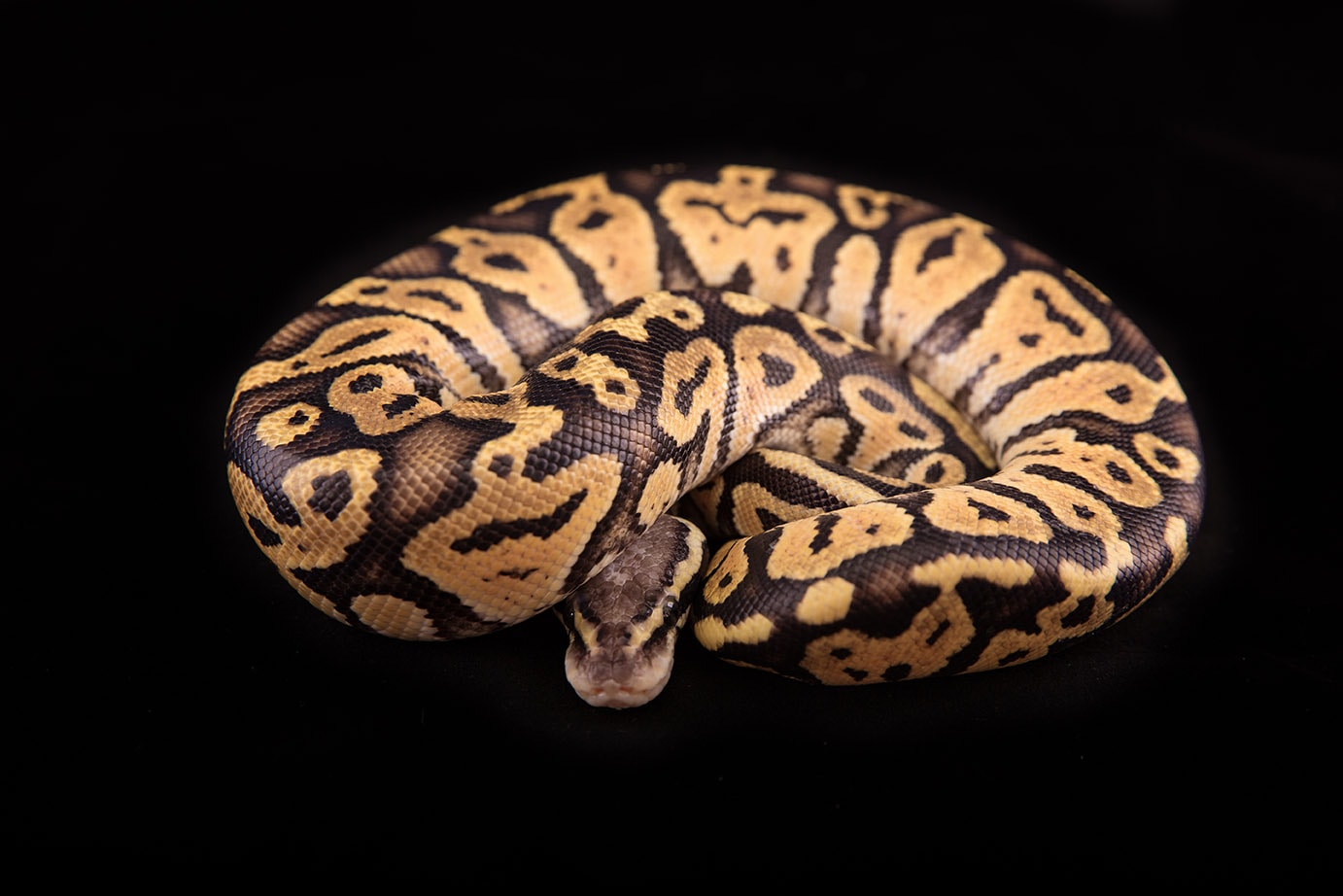
In order to get the right temperature for your ball python, you need to use certain tools around their tank. Most importantly, you have to use specific heat sources strategically throughout the enclosure. Most beginner reptile owners prefer using under tank heating pads or ceramic bulbs.
Only place direct heat source above the basking side of the tank. If you use an under-tank heating pad, place it underneath the tank, not inside the tank.
 What Is the Right Humidity for a Ball Python?
What Is the Right Humidity for a Ball Python?
| Situation | Min | Max |
| Non-Shedding | 55% | 60% |
| Shedding | 60% | 65% |
Humidity refers to how much moisture is in the air. Just as temperature is important for your snake’s health, so too is humidity. Too low or too high humidity levels can lead to illnesses, irregular shedding, and other harmful situations for the snake.
Ball pythons are from Central and West Africa, which means they have evolved to thrive in high heat and high humidity levels. In the wild, humidity in this area typically ranges between 55% and 70%. Sometimes in the morning, it can reach over 80%.
Although it’s important to replicate the snake’s natural habitat inside the enclosure, most domesticated ball pythons thrive when the humidity level is between 55% and 60%. These humidity levels keep their skin moist so that they can properly shed and avoid different illnesses. At the same time, it is not so high that it leads to irregular shedding issues.
In fact, maintaining a humidity level right around 60% can extend the lifespan of pet ball pythons by quite a bit. The natural lifespan of a ball python is 10 years, but some pets live to be as old as 25 years old.
It’s important that the humidity does not drop below 45%, even at night. Low humidity causes a number of shedding issues and health issues, such as vision problems, scale damage, and bacterial growths. Do not have humidity levels above 60%, either. Too much humidity can lead to mold, bacteria, and respiratory infections.
Humidity Levels for Shedding
Whenever your Ball Python is shedding, which should occur about every four to six weeks, you may want to increase the humidity level slightly. Humidity levels between 60% and 65% will be ideal so that the ball python can properly shed its skin without being too wet either.
Maintaining Humidity Levels
In order to maintain humidity levels, you need to set up the tank in such a way and use specific tools. To begin with, use two hygrometers to measure the humidity levels on both sides of the heat gradient extremes. In other words, place one on the hot side and the other on the cool side. This can help you ensure that the humidity levels are between 55% and 60%.
Tank setup and substrate type can help you maintain the humidity levels as well. Make sure that there is at least one bowl of water within the tank so that the water can evaporate into. You may even want to put a heat pad underneath the water to quicken the speed. As for the substrate, Cypress mulch is best. It holds the moisture and is less prone to rotting and mold as Aspen shavings.
If you’re having trouble getting the right humidity, pay attention to where the tank is placed. If the tank is placed in direct sunlight, the humidity levels can get too high. Conversely, the humidity levels can drop low if the tank is right next to a vent.
In the case that you need to increase the humidity, which is more likely than needing to decrease it, you can also mist the tank and snake occasionally. Be careful as you are misting because you don’t want to add too much moisture. It’s okay if the humidity briefly reaches 65%, but you don’t want it to go much higher than this.
 Conclusion
Conclusion
One of the most difficult parts of owning a Ball Python is maintaining the temperature and humidity levels. You want the temperature gradient to be between 75°F and 95°F, while you want the humidity levels to be between 55% and 60%.
If you take the time to perfect your snake’s condition so that the tank has this temperature and humidity, the snake should live a very long time. Investing in a good thermometer and hygrometer can make maintaining these levels easy too!
Featured Image Credit by: Marcus Gründl, Pixabay

 What Is the Right Humidity for a Ball Python?
What Is the Right Humidity for a Ball Python? Conclusion
Conclusion